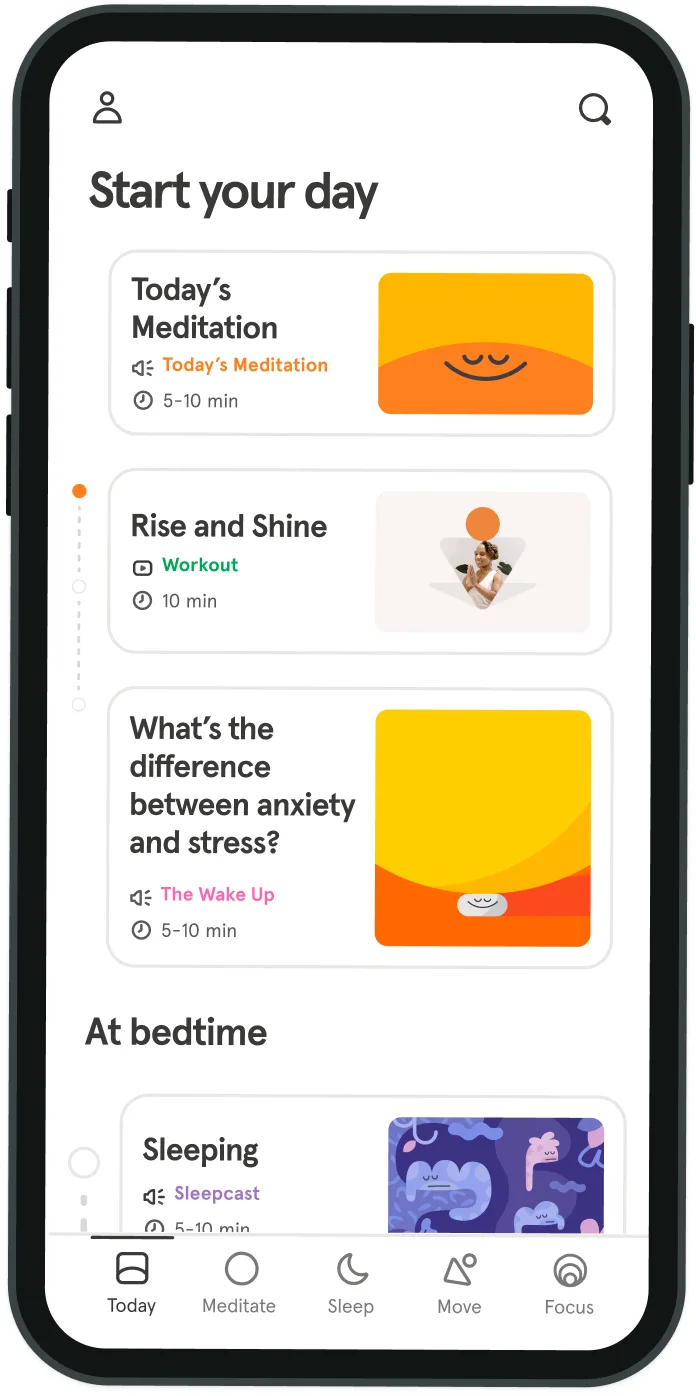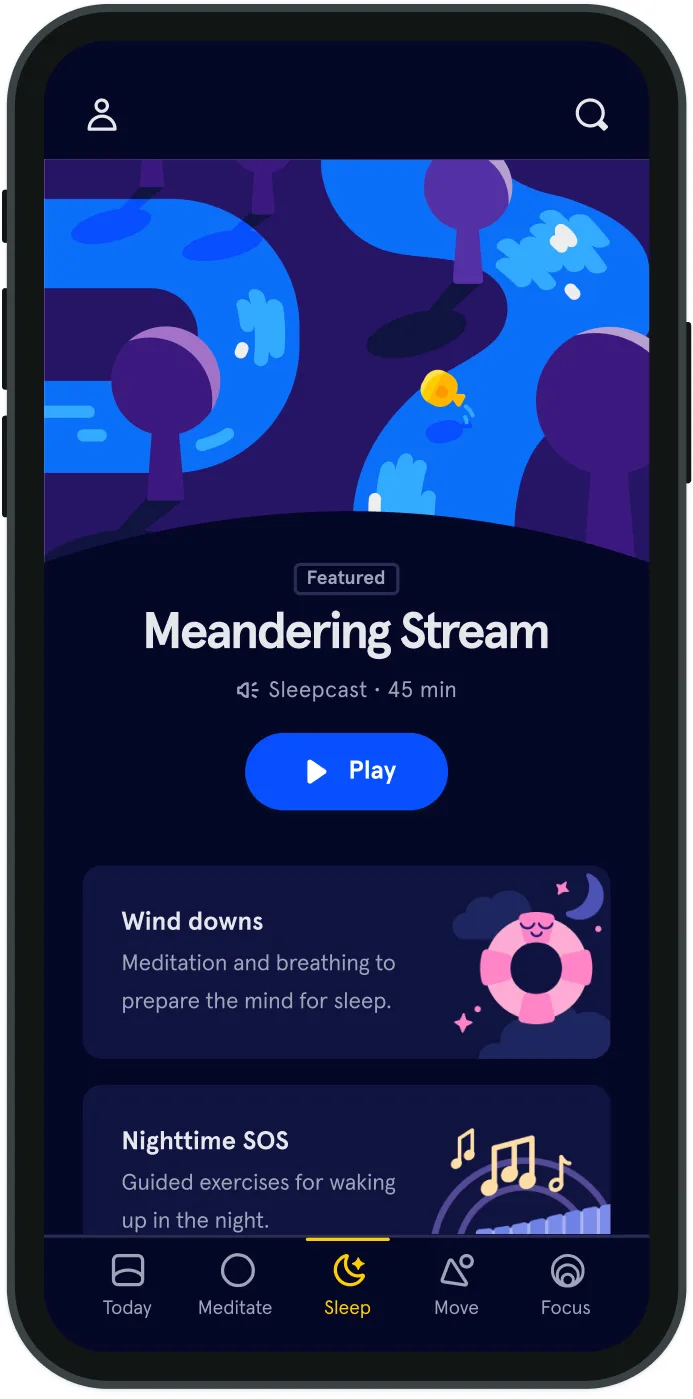If how you react is up to you, how do you actually react better?
The day after I finished a tech-free mindfulness retreat in the mountains, I was feeling grounded and in great spirits. On the train home, I began scrolling through new emails and notifications to see what I missed. One Facebook notification caught my eye, so I clicked on it. Within moments of scrolling through posts, familiar feelings of tightness in my chest and anxiety started to flood in.
Frequent social media use may have seemingly innocuous consequences like the fear of missing out or comparing yourself to others, but the stress and anxiety caused by those feelings (and our responses to them) have much broader implications. Diana Winston, Director of Mindfulness Education at UCLA’s Mindfulness Awareness Research Center, regularly discusses this with students and the general public. “We’re anxious,” Winston said at a recent daylong retreat, “It’s OK. It’s normal and appropriate. We’re living in stressful times.” Even though anxiety is an appropriate response to a threat, she said, “It often gets out of control.”
Winston went on to explain that worry and anxiety are different sides of the same coin: fear. When we are afraid of some future event, our thoughts turn to worry and our body sensations become overrun with anxiety. This is often felt as a tightened chest, racing heart, or a clenched jaw. Winston explained that while some amount of worry and rumination can be helpful, such as planning for contingencies and solving problems — we get into trouble when it goes unchecked. In those cases, we become reactive to fears and anxieties, instead of responsive to our actual situational needs.
This fear response is the result of an influential neurological tango. One partner in this tango, located in front of the brain’s temporal lobes, is called the amygdala. Responsible for the perception of emotions, including fear, anger, sadness and the controlling of aggression, the amygdala is our threat detection control tower. It is crucial in protecting us from perceived danger (eg. staying out of a slithering snake’s path) and recognizing similar events in the future (eg. steering clear of snakes in general). It is fully developed at birth and it’s a deeply primal part of our neural structure. Often referred to as the reptilian mind, it exists in all vertebrates and, while it protects us from imminent danger, it often causes hyper-reactivity when it dances solo.
The other tango partner, called the prefrontal cortex, is located just behind the forehead. It is responsible for many higher level-thinking skills, including analytical processing, executive decision-making, and behavior modification. It keeps areas of our brain like the amygdala in check, instructing our brains as one researcher describes it, “I know it’s a snake, but it’s behind a piece of plexiglass, so we’re OK.” Greater activity in the amygdala and lower activity in the prefrontal cortex has been linked to aggressive behavior, increased anxiety and a lack of ability to make sound decisions. As opposed to the amygdala, it isn’t fully developed until a person’s mid-20’s. This means the choreography for the neural tango doesn’t approach balance until the third decade of life, assuming no history of trauma, neglect, or underlying mental health conditions.
The other tango partner, called the prefrontal cortex, is located just behind the forehead. It is responsible for many higher level-thinking skills, including analytical processing, executive decision-making, and behavior modification. It keeps areas of our brain like the amygdala in check, instructing our brains as one researcher describes it, “I know it’s a snake, but it’s behind a piece of plexiglass, so we’re OK.” Greater activity in the amygdala and lower activity in the prefrontal cortex has been linked to aggressive behavior, increased anxiety and a lack of ability to make sound decisions. As opposed to the amygdala, it isn’t fully developed until a person’s mid-20’s. This means the choreography for the neural tango doesn’t approach balance until the third decade of life, assuming no history of trauma, neglect, or underlying mental health conditions.
A particularly useful technique for calming the twitchy, but deep-seated amygdala, is a mindfulness strategy which Winston introduced at the retreat, called ‘RAIN’:
- Recognize: Become aware of the kind of emotion you are having. Just this simple act of recognizing can be helpful. Give it a soft mental label like “fear”, “sadness”, “joy”, “thinking”, etc.
- Allow: Can you let this emotion be here? See if you can bring some gentle acceptance to it. Recognize that all emotions are OK, it’s our relationship to those emotions that can be troublesome.
- Investigate: Get curious about your emotion. What does it feel like, particularly in your body? Can you feel it in your chest or belly or elsewhere? Does it move or stay the same? Are there accompanying thoughts? Use your mindfulness to experience the emotion in the present moment.
- Not identify with: As you go through the above process, you will naturally begin to take this emotion less personally, seeing it as it is: energy in motion, passing through you. In other words, seeing anxiety as ‘the anxiety’ versus ‘my anxiety’. The dis-identification process allows space from a difficult emotion and helps regain a greater sense of calm and ease.
The RAIN technique, and mindfulness meditation in general, becomes a powerful tool to supersede our more primal threat-based reactivity and replace it with more thoughtful responsiveness. In fact, after studying MRI scans before and after an 8-week mindfulness course, University of Pittsburgh researchers found that the amygdala of study subjects appear to shrink in volume, while the prefrontal cortex becomes thicker. Mindfulness practice, in effect, increases one’s ability to engage higher order, prefrontal cortex regions and reduce lower-order brain activity. This is a remarkable finding since so many of us search for ways to reduce stress reactivity, improve responses to stressors, and develop a greater sense of ease amidst life’s instabilities. Thinking back to that anxious moment on my train ride home, I remember feeling like a mental ninja since I had spent days in mindfulness practice. So I let my prefrontal cortex lead the dance. Similar to the RAIN technique, instead of jumping on the negativity train, I watched the thoughts as they popped up, saw where they landed in my body, and followed their movement. Eventually the physical sensations dissipated and my inner skies were once again clear and blue. As Winston offered at the end of the daylong retreat, “You’re not going to get rid of the causes of anxieties in life, but you can be present with them and learn to respond more skillfully.”
***
If you want to start getting to know your mind a little bit better, learn more at Headspace.
Mindfulness meditation becomes a powerful tool to supersede our more primal threat-based reactivity and replace it with more thoughtful responsiveness.
Danit Kaya


Be kind to your mind
- Access the full library of 500+ meditations on everything from stress, to resilience, to compassion
- Put your mind to bed with sleep sounds, music, and wind-down exercises
- Make mindfulness a part of your daily routine with tension-releasing workouts, relaxing yoga, Focus music playlists, and more
Meditation and mindfulness for any mind, any mood, any goal

Stay in the loop
Be the first to get updates on our latest content, special offers, and new features.
By signing up, you’re agreeing to receive marketing emails from Headspace. You can unsubscribe at any time. For more details, check out our Privacy Policy.
- © 2025 Headspace Inc.
- Terms & conditions
- Privacy policy
- Consumer Health Data
- Your privacy choices
- CA Privacy Notice
